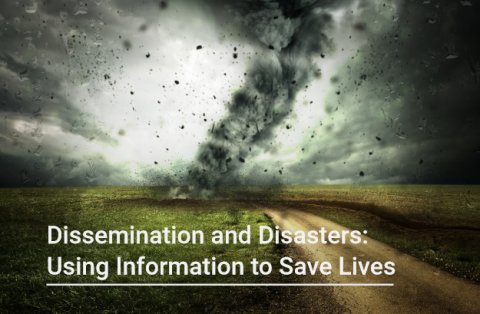This course is designed to demonstrate how resources for the National Library of Medicine can be used to help save lives during disasters.
Intended Audience
First responders, medical professionals, public health workers, emergency preparedness coordinators, students, librarians.
Length
The length of time for participants to take this course is estimated to be one hour.
Course Content
This course will cover:
- Phases of Emergency Management
- Categories of incidents
- CBRNE
- Natural & Man-Made
- Public Health/Infection Disease
- Case Study Examples
- Hurricane and Storm Surges
- Opioids
- Radiological Emergency
- Chemical Spills
You will have the opportunity to watch the simulation and then practice it where you have the chance to apply the knowledge.
Learning Objectives
By the end of this module, you will be able to:
- Define key terms related to emergency management
- Describe the four phases of emergency planning and
- Analyze situations and determine the best resource to use to find information
Measurable Outcome
At the end of this training, you will be able to apply what you’ve learned in order to know where to find life-saving information when preparing and responding to disasters
Certificate of Completion
A Certificate of Completion is awarded on successful completion of this course. In order to successfully complete this course, you MUST:
Score 70% or higher on the posttest. If you do not receive 70% on the posttest, you may review the material and re-take the posttest.
The completion of this module will offer 1.0 hour of Medical Library Association Continuing Education Credit, and CPH Continuing Education (CPH-CE), more instructions at the completion of this course if you are interested.
Core Competencies for Public Health Professionals
Domain 6: Public Health Sciences Skills
- 6B5. Retrieves evidence (e.g., research findings, case reports, community surveys) from print and electronic sources (e.g., PubMed, Journal of Public Health Management and Practice, Morbidity and Mortality Weekly Report, The World Health Report) to support decision making
Presenter(s) and/or Content Experts
Derek Johnson, MLIS
Acknowledgements
The following organizations collaborated on the development of this course: Hardin Library University of Iowa; Greater Midwest Region (GMR) National Network of Libraries of Medicine (NNLM); University of Iowa College of Public Health Institute for Public Health Practice (UICPH-IPHP); and Midwestern Public Health Training Center (MPHTC).
This project has been funded in whole or in part with Federal funds from the National Library of Medicine, National Institutes of Health, Department of Health and Human Services, under Grant Number 1UG4LM012346-01 with The University of Iowa.




